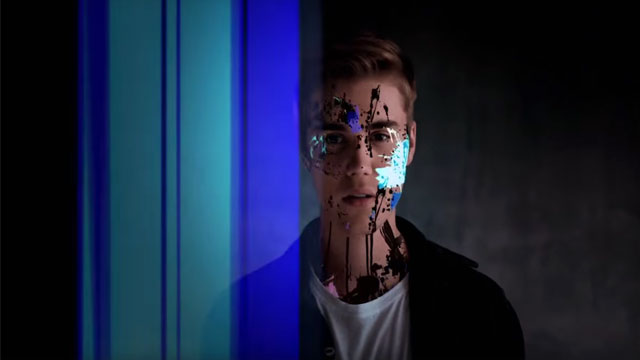The Hobbit, by legendary story-weaver J.R.R. Tolkien, hit the shelves in 1937. This unassuming little book sparked the ignition of imaginations across the globe and continues to do so today. Three-quarters of a century later the world waits with baited breath to see their beloved characters come to life on the big screen.
The tale of how The Hobbit began as a book and is now making its way towards theaters as a live action film is nearly as epic as anything Tolkien produced – And here it is.
The History
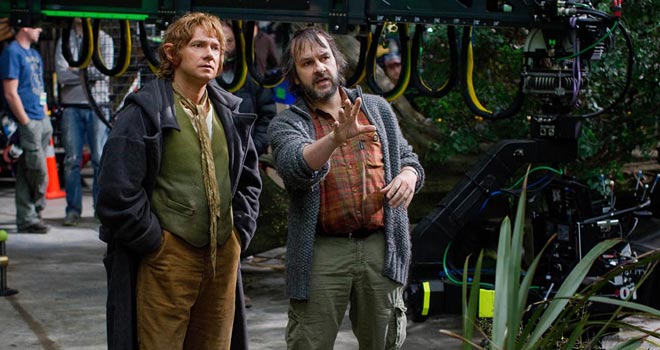
Way back in 1966, Tolkien sold the film rights of The Hobbit and The Lord of the Rings to United Artists, who would later be bought by movie goliath MGM in 1981. It was another ten years before Saul Zaentz, a famous, Oscar-winning producer, bought the full rights to The Lord of the Rings and partial rights to The Hobbit. This was a tricky deal because while he had the right to produce and distribute The Lord of the Rings projects, he only had the right to produce The Hobbit. The rights of distribution for a Hobbit film remained with United Artists. This would later become a major sticking point in the production of The Hobbit film.
Over the course of the next decade and a half, one Hobbit film and Two Lord of the Rings films were produced, though neither of them by Zaentz. The animated version the Hobbit was not well received but would become a cult classic among the generation that is currently lining up to see the film being released later this month. All three films made during this time were animated and nobody came forward with an idea for a live action film until fourteen years after the sale of the film rights was completed.
According to his biography, Peter Jackson: A Film-maker’s Journey, in 1995 Peter Jackson approached Miramax with an idea to direct an adaptation of The Hobbit. His original vision was to construct a movie that would be released in three parts: the first would cover The Hobbit and the next two would cover the saga of The Lord of the Rings. He discovered that Zaentz didn’t have the distribution rights while negotiating for the film and ultimately put his plans for the project on hold. Instead, he opted to start filming King Kong in partnership with Universal Films.
Unfortunately for him, Universal cancelled that project and, in 1997, Jackson was finally able to reach an agreement with Miramax to produce The Lord of the Rings movies.
The story behind the production of the three LOTR movies could take up a small book itself but it must be mentioned because it’s production and ensuing drama would have a direct effect on the production of The Hobbit.
As Jackson began to sink his teeth into the planning of LOTR, during 1998, Miramax pushed for the Lord of the Rings, originally proposed as a two-part project, to be condensed into one film due to what they claimed were concerns about production costs. Jackson was not impressed with this suggestion and declined, turning instead to New Line Cinema. New Line proposed a trilogy and the resulting films were released during the years 2001-2003.
Immediately following the release of the final film, a drama-fest of epic proportions began.
The Rights War
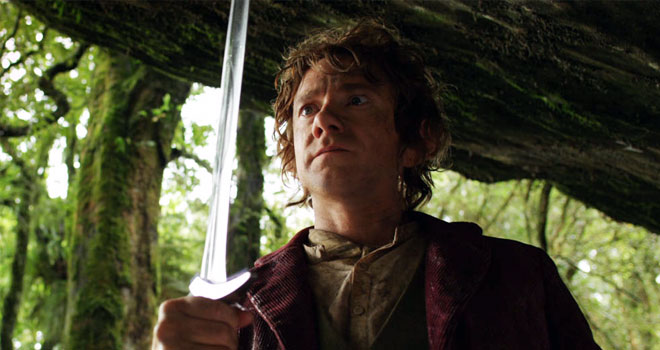
Zaentz, still around and still involved filed a lawsuit against New Line over the distribution of royalties which he felt were digging into his profits. That same year (2004) Jackson requested an external audit from New Line of their financial records with regards to the films. His contract with them specifically gave him the right to make this request and he was concerned that funds being distributed internally amongst Time Warner companies were ‘sweetheart deals’ that could be cutting into his profits.
New Line dragged their feet over the request and in 2005, Jackson filed a law-suit against New Line because his request for an audit was not honored in a timely fashion. The entire situation created bad mojo between Jackson and Bob Shaye, New Line’s CEO. Shaye reportedly claimed that Jackson just wanted another $50-$100million dollars after having already been paid millions and millions of dollars. Not surprisingly, Jackson objected to the implication that he was just being greedy. Eventually, both lawsuits were settled: Zaentz settled out of court in a private agreement and New Line was fined $125,000 for not honoring their contract.
Peter Jackson Gets Fired
In an effort to smooth feathers and as part of the settlement, New Line contacted Jackson in 2006 about finally filming The Hobbit. Jackson was not receptive but in a twist that surprised many, MGM came out of nowhere, proposing work on the film with Jackson and New Line. The response from New Line was to publicly announce that Jackson was fired.
One can only imagine the kind of behind-the-scenes desk pounding rage that this action provoked. This was the final straw for Jackson, who published an open letter online declaring that he was finished with the studio. It seemed that any Hobbit project was doomed as the bitter battle threatened to erupt out of control, crushing any potential for progress to an actual film.
The conflict came to an abrupt and surprising end with the announcement from MGM in 2007 that they would be co-financing a two-part film of The Hobbit with New Line cinemas. Who was their executive producer of choice? Peter Jackson! Finally, finally it seemed that all was well and the film could start rolling.
In true soap-opera form, though, the dramatic tale was only just getting started. The Tolkien estate came on to the scene at this point in the saga to sue New Line for 7.5% of all profits from The Lord of the Rings, effectively blocking production of The Hobbit.
Never giving up hope, as 2007 became 2008, Warner Bros. absorbed New Line Cinemas and Guillermo Del Toro was brought on to the team as director. Pre-production for the film finally began in August of that year as the sour fight over royalties continued in the courtroom. The lawsuit between J.R.R. Tolkien’s estate and New Line Cinemas was finally settled in 2009 and it seemed that the troubles for The Hobbit were finally over.
The Curse of The Hobbit
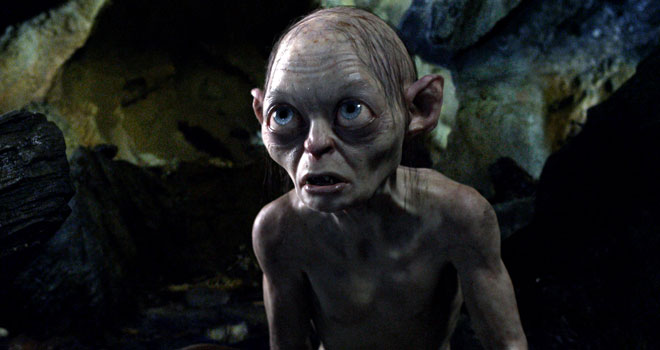
For a few months, all was well and the team began to breathe a bit more easily, believing that they might actually get their “labor of love” project underway.
Unfortunately, 2010 saw more trouble brewing and rumors about “the curse of the hobbit” started floating around.
The first bad news of the year came when Del Toro quit. His reasoning, as he told the public, was that he was frustrated with the constant delays that he claimed MGM was blaming on financial difficulties. This left the film without a director so naturally, negotiations began between Warner and Jackson for him to fill that role. Later that year the studio announced that Jackson would once again hold the title of director for both films and that he would be filming them in 3-D.
The second disaster was a fire in a New Zealand warehouse that happened to store many of the miniature sets used in shooting the film. Rumors of “the curse” began to be taken more seriously and make their way around web communities around the world. It seemed it really would take a miracle for The Hobbit to ever see the light of day.
To make matters worse, The International Federation of Actors raised the cry for union members to refuse roles for The Hobbit in support of a labor dispute in New Zealand. Jackson wasn’t having any of that and threatened to take production out of New Zealand causing a settlement to be reached rather quickly. Casting finally began and, going into 2011, the only issue left to resolve was the matter of distribution rights still hanging on from 1966, when United Artists retained them from Zaentz. Warner Bros. and MGM eventually reached an agreement that gave the rights of distribution for both films to Warner Bros. exclusively.
The Dream Becomes Reality
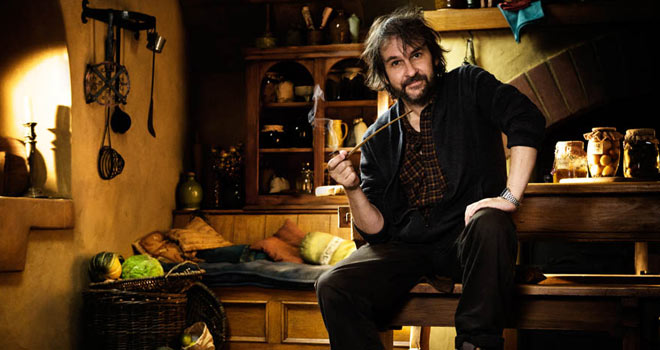
Finally, on March 12, 2011, a mere 16 years after Jackson first brought his brain-child to a production company for consideration, filming for The Hobbit began in New Zealand. In late summer of 2012, Jackson confirmed the hopeful suggestions he made at that year’s Comic-Con: that he had received the go ahead for the two-part Hobbit film to be presented as a trilogy. The first of the films, The Hobbit: An Unexpected Journey, is set for release on December 14th of this year.
The incredible thing about the journey of this story, which began 75 years ago, is the passion and inspiration it provokes in the hearts and minds of those who know it. Jackson’s dedication to his project has spanned the past 17 years and will no doubt continue as he continues directing and producing these films. There are many other players who have come and gone throughout this tale and more are sure to come. As The Hobbit captured humanities dark and light sides and everything in between, so too has the story of the evolution of Tolkien’s work into a live-action film.
What began as a dream in the mind of a remarkable man grew into a saga that spanned generations to become a major motion picture. It is only fitting to honor the original artist’s own words by remarking that the Saga of The Hobbit Film is a “tale that grew in the telling.”
The Hobbit: An Unexpected Journey hits theaters December 14, 2012.
Images Courtesy of Warner Bros.






